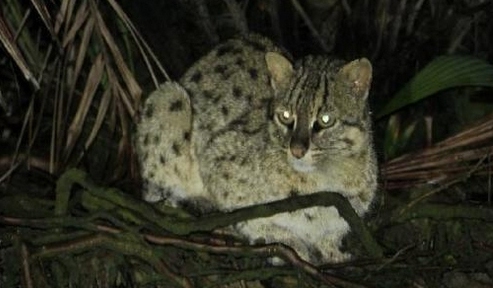Kendrapara: Already on the verge of extinction, fishing cat is going to see more of its species at Bhitarkanika National Park (BNP) as the Odisha government has launched a project for its conservation.
Classified under schedule I of Indian Wildlife Protection Act, 1972, there are 20 fishing cats at BNP as per the 2019 bird-animal census.
According to environmentalist Hemant Kumar Rout, various reasons have pushed this animal to near-extinction. Starting from sea coast erosion to infiltration, encroachment and illegal construction in BNP area have widely been responsible for bringing down their numbers.
In the last ten years, prawn gheries have extensively damaged rivers, rivulets and the environment. The chemical gas emitted from these gheries has played a major role in reducing the number of aquatic animals in rivers and seas. In 2018, as many as 307 dolphins were sighted here. The last census put their number at only 62. “If the biodiversity of the BNP is not protected, our next generation will find them only in pictures,” he warned.
When contacted, DFO Bikash Ranjan Dash said globally the population of this animal is abysmally low. If the surrounding atmosphere of BNP delta is considered, there number must have been more.
Fishing cats are great hunters. They prefer catching fish in water. Their paws and sharp teeth make them potent hunters. The state government has recently emphasized on its conservation, Dash said.
Fishing cats are double the size of common house cats. Apart from fish, they also prey on snakes, frogs, birds and feed on carcasses of other animals.
They are good swimmers. They breed all year round and spend most of the time in dense vegetation areas close to water bodies.
PNN






































